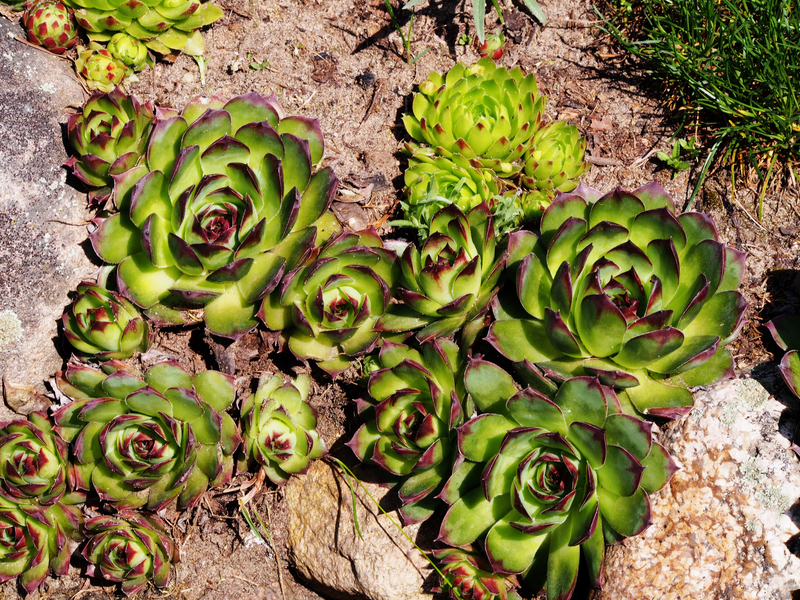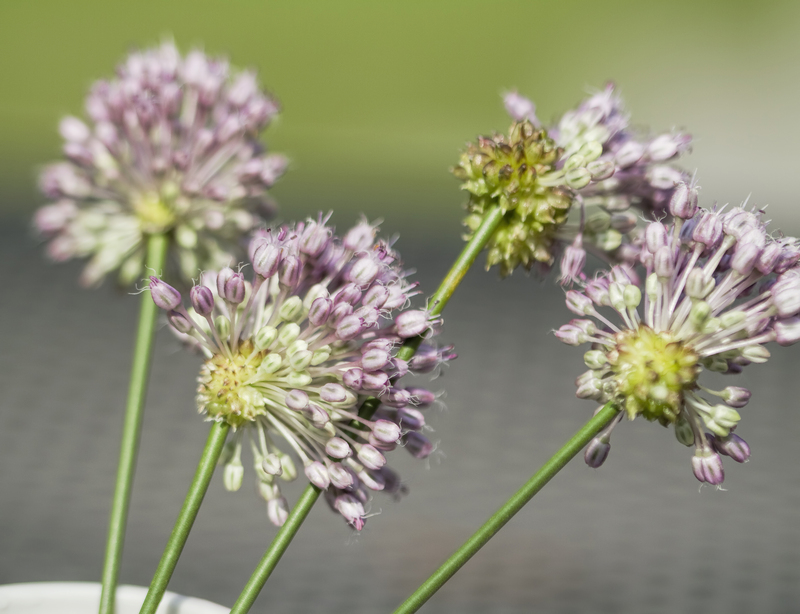Strategies to Maintain a Lush Garden Even During Winter
Posted on 07/06/2025
Strategies to Maintain a Lush Garden Even During Winter
Winter's chill can pose a major challenge for gardeners who wish to keep garden lushness year-round. If you're wondering whether it's possible to enjoy vibrant outdoor spaces through the frost and snow, the answer is a resounding yes. With the right methods, you can maintain a thriving winter garden that bursts with color, texture, and life.
Read on for an in-depth guide packed with expert-approved strategies to preserve a lush garden during winter. This comprehensive article explores plant selection, winter care routines, soil health, protection techniques, and more. Whether you're a seasoned horticulturist or a home gardening enthusiast, these tips will help ensure your garden remains attractive and healthy, even in the coldest months of the year.

1. Choose Winter-Hardy Plants
The foundation of any vibrant winter landscape lies in your choice of plant species. Not all plants can survive icy temperatures, but many are naturally adapted to thrive despite the frost.
Evergreens: The Pillars of Winter Color
- Conifers: Spruce, pine, cedar, and fir trees retain their needles year-round, adding reliable greenery and structure.
- Broadleaf Evergreens: Holly, boxwood, camellias, and rhododendrons offer colorful berries or blooms along with lush leaves.
Ornamental Grasses and Hardy Perennials
- Miscanthus, feather reed grass, and sedges provide height, movement, and visual interest, even when topped with snow.
- Perennials like hellebores, winter aconite, and snowdrops bloom during the cold, bringing life to dormant beds.
Deciduous Shrubs and Trees with Winter Interest
- Dogwoods display colorful stems, while witch hazels and viburnums bloom with fragrant winter flowers.
- Bark texture and color from birches or redtwig dogwood can create dramatic visual effects.
_**Tip**_: When selecting your garden's plants, always check their USDA Hardiness Zones or consult local nurseries to match your choices to your region's winter conditions.
2. Mulch and Blanket Your Beds
A crucial element in achieving a lush winter garden is protecting your soil and roots. Mulching not only conserves moisture but also insulates plant roots from freeze-thaw cycles, minimizing winter stress.
Mulching Best Practices:
- Apply a 2-4 inch layer of organic mulches such as bark, wood chips, pine needles, straw, or compost.
- Mulch after the ground has hardened slightly from the first frost but before temperatures plummet.
- Keep mulch a few inches away from woody plant stems to prevent rot and rodent damage.
In especially cold climates, consider an extra "blanket" of burlap or frost fleece over delicate landscape beds. Weighted row covers help shield ornamental plants from ice, wind, and drying winter sun.
3. Provide Adequate Winter Watering
Many gardeners overlook the importance of watering in winter. While plant growth slows, roots still require moisture--especially for broadleaf evergreens and newly planted specimens.
- During snowless periods, water your garden deeply every 3-4 weeks on windless days, provided the ground isn't frozen.
- Hydrated roots are less prone to damage from sudden temperature swings and winter droughts.
Note: Do not overwater, as excess moisture can promote rot. And never water when the soil is frozen solid, since roots can't absorb moisture.
4. Guard Against Winter Pests and Diseases
Even in winter, some pests and diseases can threaten the lushness of your winter garden.
- Remove diseased leaves and fallen fruit before winter to prevent overwintering pests and fungal spores.
- Check evergreen plants for scale or mites and treat them with dormant oil if necessary.
- Protect young trunks from rodents and deer by wrapping them in tree guards or hardware cloth.
_Vigilance will reduce spring cleanup and prevent plant damage._
5. Use Raised Beds and Containers
Raised beds offer several advantages throughout the year, and they're especially valuable for lush gardens in winter.
- Soil in raised beds warms sooner in spring and drains better during winter rain or snow.
- It's easier to insulate the soil in raised beds with additional mulch or covers.
- Containers can be moved to more protected locations or indoors if needed.
Tips for Winter Containers:
- Choose frost-proof planters and use well-draining soil mixes.
- Group pots together and insulate with bubble wrap or burlap if frost or deep freezes are forecast.
- Plant drought-tolerant evergreens, winter-blooming pansies, or ornamental cabbages for ongoing visual appeal.
6. Leverage Structural Elements and Hardscaping
A garden's lushness isn't only about greenery. Winter is the perfect season to let structural interest shine:
- Install arbors, trellises, or obelisks for visual focus once foliage dies back.
- Use rocks, statues, birdbaths, or water features to anchor garden beds.
- Decorate with outdoor lighting or lanterns to illuminate walkways and evergreen groups at night.
Combining living and non-living elements keeps your winter garden engaging and enchanting, even in snow.
7. Prune Correctly for Winter Health
_Proper pruning_ boosts health, tackles disease, and prepares your plants for spring vigor. The right technique and timing, however, is crucial:
- Late fall or early winter, after hard frost, is a good time to cut back herbaceous perennials, dead annuals, and diseased growth.
- Trim broken, dead, or crowded branches from trees and shrubs, being careful not to remove buds needed for spring flowering.
- Leave some seed heads and tall stems for wildlife habitat and added texture.
8. Encourage Wildlife for a Lively Garden
Birds, bees, and beneficial insects play a key role in garden vitality. Even in winter, you can support wildlife that, in turn, helps control pests and pollinate early flowers.
- Hang feeders filled with seeds and suet to invite birds.
- Keep a small pond ice-free for drinking water.
- Plant berry-producing shrubs that provide natural winter food sources.
- Leave leafy piles or logs for sheltering insects and small mammals.
Not only does wildlife activity keep your winter garden lively, but it also contributes to long-term garden health and lushness.
9. Warm up With Winter Gardening Tasks
Just because the weather is cold doesn't mean you can't stay active in the garden. Keep your plot lush during the winter months by tending to important tasks:
- Clean and sharpen tools for next season.
- Monitor for snow and ice buildup on branches, gently shaking off heavy loads to prevent breakage.
- Plan next year's garden to optimize for continual visual interest.
- Start seeds indoors for early spring blooms.
Winter Planning: A Key to Year-Round Lushness
Take notes on what worked and what didn't in your winter garden. Make a planting plan for more winter-hardy plants, and experiment with color, height, and form to maximize appeal during the dormant season.

10. Use Protective Winter Structures
Protect vulnerable plants, get a head start on spring, and keep your winter garden lush by adding structures such as:
- Cold frames, mini hoop tunnels, or cloches for tender vegetables and annuals.
- Windbreaks made of burlap, fencing, or evergreen branches to shield sensitive specimens.
- Temporary greenhouses or polytunnels that can be disassembled when spring arrives.
Conclusion: Transforming Winter into a Season of Garden Abundance
Keeping your garden lush during winter is absolutely achievable with thoughtful planning, resilient plant choices, and a proactive care routine. While it's tempting to "rest" through the cold months, implementing these expert strategies ensures your outdoor sanctuary remains a year-round haven of beauty, wildlife, and vitality.
- Choose the right mix of evergreen and cold-tolerant plants.
- Mulch deeply to protect root systems.
- Water wisely and guard against pests and diseases.
- Utilize raised beds, containers, and winter structures.
- Create strong visual interest with hardscaping and winter-friendly plant arrangements.
- Encourage visits from birds and beneficial insects.
- Stay engaged with winter gardening tasks and continual planning.
With patience and care, your winter garden can be far from bleak--it can be a source of joy and lush greenery even beneath the snow.
Ready to transform your garden this winter? Embrace these winter gardening strategies and enjoy a lush, vibrant, and resilient landscape all year long!



